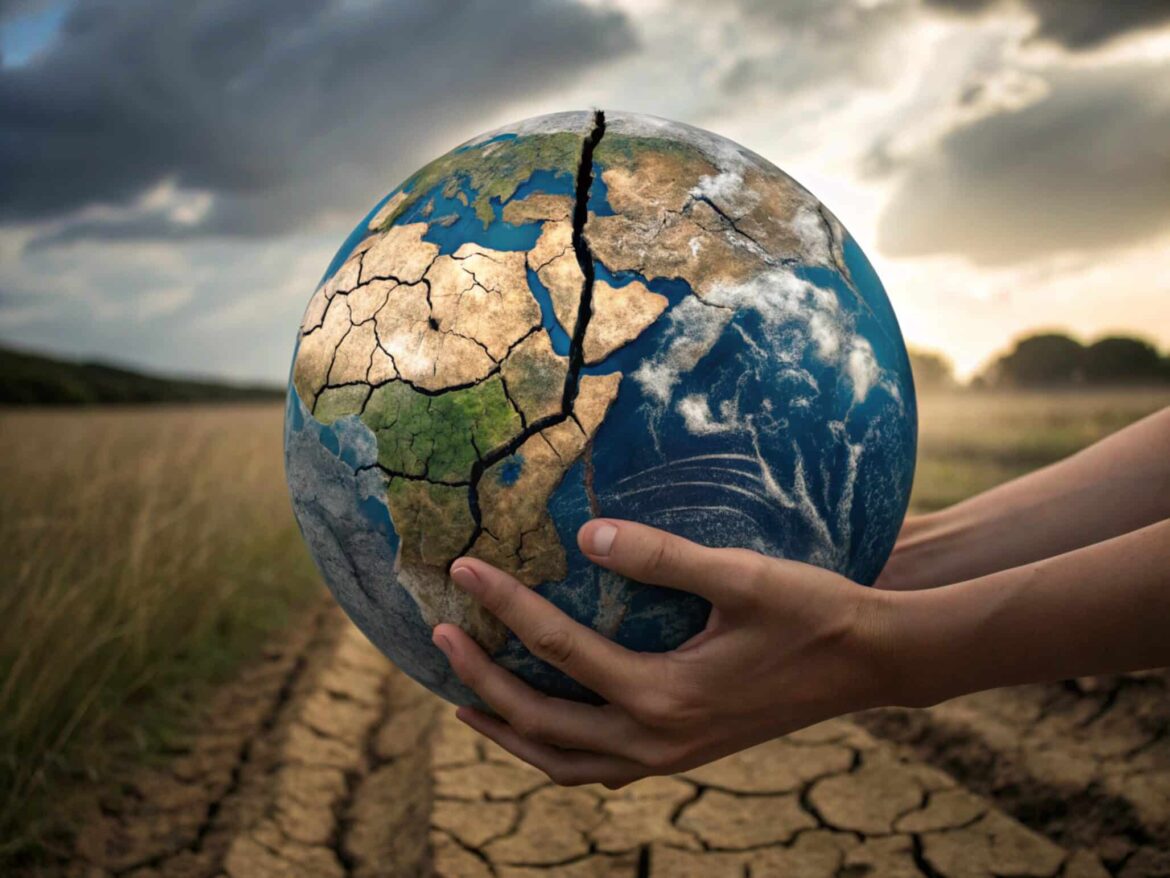In a Nature article, 21 leading scientists outline strategies to leverage global food systems to halt and reverse land degradation, emphasizing that this must be a top priority to combat climate change and prevent biodiversity loss.
The study breaks new ground by quantifying the potential impact: cutting food waste by 75% and maximizing sustainable ocean-based food production could, by 2050, preserve land equivalent in size to Africa.
According to the paper: “Food systems have not yet been fully incorporated into intergovernmental agreements, nor do they receive sufficient focus in current strategies to address land degradation. Rapid, integrated reforms focused on global food systems, however, can move land health from crisis to recovery and secure a healthier, more stable planet for all.”
The authors highlight the critical need to curb food waste and manage land sustainably, proposing an ambitious yet achievable goal of restoring 50% of degraded land by 2050 — up from the current target of 30% by 2030, according to a press release.
They also stress that these measures would deliver substantial co-benefits for climate, biodiversity, and global health.
“This paper presents a bold, integrated set of actions to tackle land degradation, biodiversity loss, and climate change together, as well as a clear pathway for implementing them by 2050,” said lead author Fernando T. Maestre of the King Abdullah University of Science and Technology (KAUST), Saudi Arabia.
“By transforming food systems, restoring degraded land, harnessing the potential of sustainable seafood, and fostering cooperation across nations and sectors, we can ‘bend the curve’ and reverse land degradation while advancing towards goals of the UN Convention to Combat Desertification and other global agreements.”
Key Recommendations to Transform Global Food Systems and Protect Land
1. Restore 50% of degraded land by 2050
Restoring half of degraded land could reclaim 13 Mkm² (3 Mkm² cropland, 10 Mkm² non-cropland). Effective restoration requires involving Indigenous Peoples, smallholder farmers, women, and vulnerable communities. Key recommendations:
Support small farmers: Shift subsidies to sustainable smallholders, expand access to technology, secure land rights, and fair markets.
Land-based incentives: Taxes or tariffs to reward low-impact farming and penalize polluters.
Environmental labeling: Guide consumer choices.
Better data/reporting: Track emissions and land-use impacts.
2. Reduce food waste by 75%
With 33% of food currently lost or wasted, cutting waste by 75% could spare 13.4 Mkm² of land. Measures include:
Prevent overproduction and spoilage.
Ban rules rejecting “ugly” produce.
Promote donations and discounted near-expiry sales.
Household education campaigns.
Support storage/transport for small farmers in developing countries.
Example: Spain’s law requiring surplus food donation or take-home options in restaurants.
3. Integrate land and marine food systems
Reducing red meat consumption in favor of sustainable seafood and seaweed can free land and reduce emissions:
Replacing 70% of unsustainably produced red meat with seafood could free 17.1 Mkm² of pasture/feed land.
Partial vegetable replacement with seaweed (10% of intake) could free 0.4 Mkm² of cropland.
Note: High-income countries benefit most; animal products remain essential for nutrition in some regions.
Combined Impact by 2050
Land spared/restored: ~43.8 Mkm² (≈ area of Africa)
Emissions reduction: ~13 Gt CO₂-e per year
Biodiversity benefits: Improved habitats and ecosystem function
Global agreements: Supports Rio Conventions, SDGs, and other international targets
Coordinated Action Among the Rio Conventions
The authors urge the UN’s three Rio conventions — the CBD, UNCCD, and UNFCCC — to align around shared goals for land and food systems. They recommend fostering knowledge exchange, tracking progress, and translating scientific advances into more effective policies to accelerate on-the-ground action.
Land and food systems, they note, are central to achieving the targets of all three conventions as well as the Sustainable Development Goals. The authors call on Parties to coordinate multilateral efforts, ensuring collaborative action across sectors.
Highlighting recent progress, the UNCCD’s 197 Parties at COP16 in Riyadh, Saudi Arabia, adopted a decision to avoid, reduce, and reverse land and soil degradation on agricultural lands — an important step toward integrated, science-driven solutions for global land challenges.
“Today, over one-third of Earth’s land is used to grow food — feeding a global population of more than 8 billion people,” said co-author Elisabeth Huber-Sannwald, Professor, Instituto Potosino de Investigación Científica y Tecnológiva, San Luis Potosí, Mexico. “Yet today, modern farming practices, deforestation, and overuse are degrading soil, polluting water, and destroying vital ecosystems. Food production alone drives nearly 20% of global emissions of greenhouse gases. We need to act. To secure a thriving future — and protect land — we must reimagine how we farm, how we live, and how we relate to nature — and to each other. It’s time for land stewardship: to care for the land as a living ally, no longer as a resource to exploit.”
By the Numbers
56%: Projected increase in food production needed by 2050 if we stay on our current path
34%: Portion of Earth’s ice-free land already used for food production, headed to 42% by 2050
21%: Share of global greenhouse gas emissions produced by food systems
80%: Proportion of deforestation driven by food production
70%: Amount of freshwater consumption that goes to agriculture
33%: Fraction of global food that currently goes to waste
US$1 trillion: Estimated annual value of food lost or wasted globally
75%: Ambitious target for global food waste reduction by 2050
50%: Proposed portion of degraded land to be restored by 2050 using sustainable land management
US $278 billion: Annual funding gap to achieve UNCCD land restoration goals
608 million: Number of farms on the planet
90%: Percentage of all farms under 2 hectares
35%: Share of the world’s food produced by small farms
6.5 billion tons: Potential biomass yield using 650 million hectares of ocean for seaweed farming
17.5 million km²: Estimated cropland area saved if humanity adopts the proposed Rio+ diet (less unsustainably produced red meat, more sustainably sourced seafood and seaweed-derived food products)
166 million: Number of people who could avoid micronutrient deficiencies with more aquatic foods in their diet


Dining and Cooking